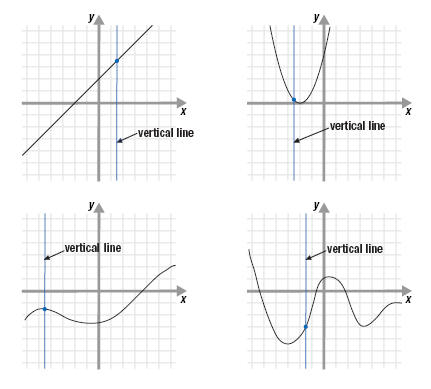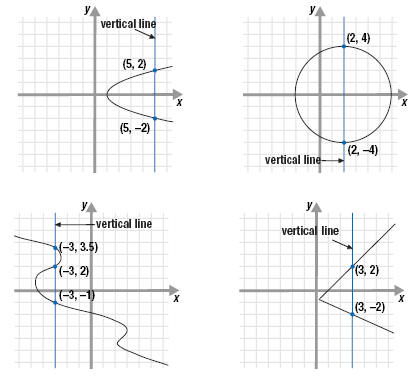Vertical Line Test
You have seen that a function is a rule that assigns to each input number, x,
exactly one output number, y. If a rule assigns more than one output value
to a given input value then it is not a function.
If we are given a graph we can determine if it represents a function by
using the vertical line test.
Procedure —
To Determine if a Graph Represents a Function (Vertical Line Test)
If you can draw a vertical line anywhere through the graph and it
intersects the graph only one time, then the graph represents a
function.
Here are the graphs of four functions. Notice that no matter where you
draw a vertical line, it will never cross the graph more than one time.

The graphs below do NOT represent functions. In each, we can draw a
vertical line that intersects the graph more than once. This shows that a
given value of the input, x, is assigned to more than one value of the
output, y.

|